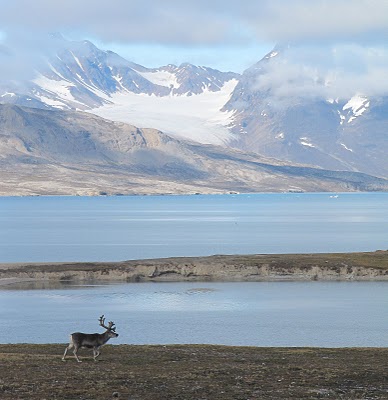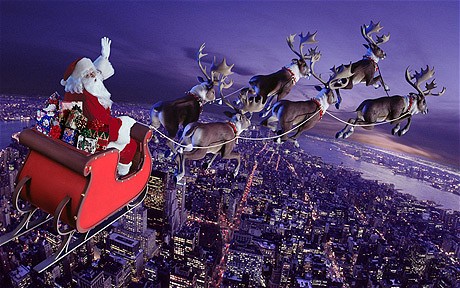When I was a child, my best-loved emblem of the Christmas/holiday season was the reindeer (although, admittedly, I thought they were “rain deer”). My poor mother had to track down reindeer-themed decorations and jumpers all over the place. The magnificent antlered beasts were not just my favorite ornaments, but they were also the subjects of my most-preferred songs (in fact, I still find Rudolph’s ascendancy to personal empowerment through effulgent appendages and meteorological coincidence to be quite stirring). Yet reindeer are not just mythical creatures made up for the holidays—the true nature of these magnificent cold weather specialists is even more remarkable than folklore.
Reindeer (Rangifer tarandus) are large powerful cervids native to the trackless tundra of the Arctic and to the taiga and bogs of the subarctic (a vast habitat which encompasses most of Alaska,Canada, Siberia, and northern Europe). The North American subspecies of reindeer are commonly known as caribou. Although the migratory caribou are rangier (with thinner bodies and longer legs than old world reindeer), they are fundamentally the same creature. The caribou are the last animals in the Americas to still migrate across the wilderness en masse. The largest herds number in the hundred thousands (!) and evoke thoughts of the Pliocene or of the Serengeti (although like most other wildlife, the great herds are quickly declining).
Adult male reindeer weigh up to 180 kilograms (400 lbs) although a few exceptionally huge bucks have been measured weighing nearly twice that. The fur of reindeer has two layers: a layer of long hollow outer hairs and a down-like layer of dense fluff. The fur can be all sorts of shades of stippled and variegated brown, black, cream, and white. Both genders of reindeer grow antlers, and the antlers are the largest in proportion to body mass of any cervid.
Reindeer have many special traits to help them survive the rigorous conditions of their northern habitat. In summer their hooves become sponge-like and flatten out to give them traction on mud. In winter reindeer hooves harden into sharp wedges for cutting through ice and snow. Unlike white-tailed deer, reindeer can see into the indigo and ultraviolet spectrum. This ability helps them survive in the grey tundra and the great monochromatic boreal forests. Many things invisible in the (human) visible spectrum pop out in ultraviolet (most notably fur and urine).
Reindeer/caribou live predominantly on grasses, sedges, and tender tree shoots during the summer, but in winter their diet changes in accordance with the barrenness of their environment. During the long lean dark times of winter reindeer largely live on lichen. The reindeer are almost alone among animals in possessing the enzyme necessary to metabolize the tough lichen (only a handful of gastropod mollusks have been found to also produce lichenase).
 Young reindeer are hunted by golden eagles and wolverines. Mature adults are largely invulnerable to any animals other than polar bears, brown bears, and above all wolves. Wolves may be the ultimate predator of reindeer and certain packs live mutualistically with the reindeer herds and follow them all winter.
Young reindeer are hunted by golden eagles and wolverines. Mature adults are largely invulnerable to any animals other than polar bears, brown bears, and above all wolves. Wolves may be the ultimate predator of reindeer and certain packs live mutualistically with the reindeer herds and follow them all winter.
Humankind has a similarly ancient and intimate relationship with the reindeer and caribou. Since the depths of the ice age, human hunter-gatherers have stalked the great herds of deer. Some tribes began to follow the herds along their entire migratory routes and eventually the people and deer gradually became integrated. The domestication of animals began similarly with goats (ibexes), cows (aurochs), and pigs, but, in the case of reindeer, the process stalled in the middle. Certain herds of reindeer are semi-domesticated: but the herders follow the deer as much as the reverse. The reindeer provide skin, meat, milk, and transportation to the tough herding/hunting nomads of the north (mainly the Sami in the modern world). The herders protect the reindeer from wolves, bear, and hunters.
Although they are not perfectly domesticated (and would probably keep on with their ancient migrations if humankind all dropped dead or decided to emigrate to Alfa-Centauri), reindeer are docile, gentle, and extremely beautiful. They are a perfect emblem of the season (although Santa’s presumably male herd would shed their antlers before Christmas), but they are an even greater emblem of the last great wilds which can be found in the far north. I devoutly hope that the great changes of the Anthropocene do not reduce the reindeer and caribou herds to a fraction of what they are today. I guess I still love them as much as ever. Where is that sweater with reindeer on it and the old Rudolph record?








2 comments
Comments feed for this article
December 27, 2013 at 10:16 AM
mom
Someone used a lot of artistic license in the last picture–the one with “reindeer” towing Santa in his sleigh. Those antlers look more like they belong to the moose rather than the reindeer.
December 30, 2013 at 9:27 PM
Wayne
I don’t know…I found some reindeer photos featuring some magnificent antlers (although I focused on magnificent scenery above).